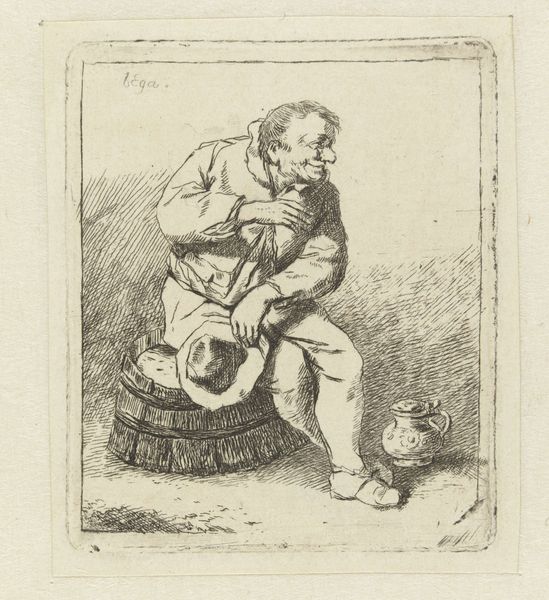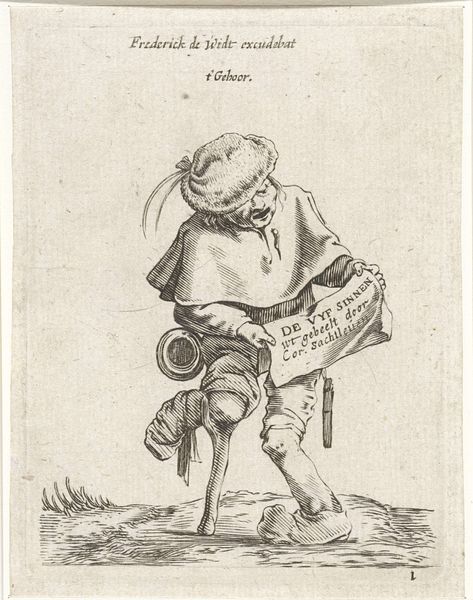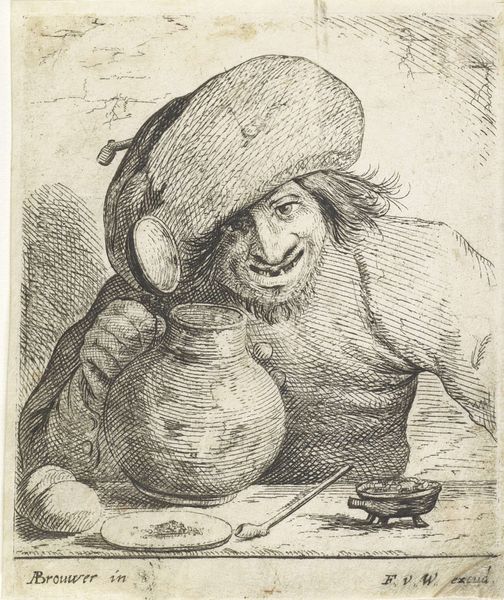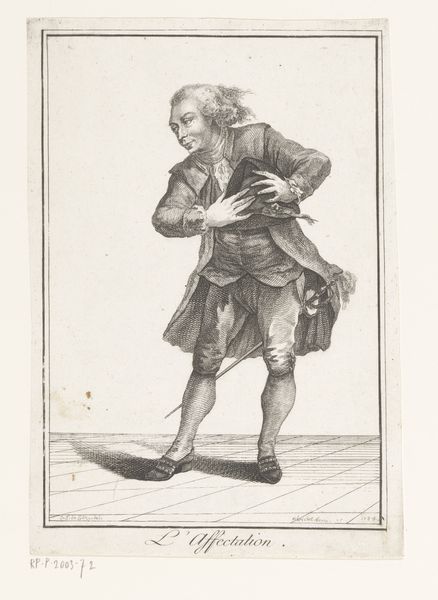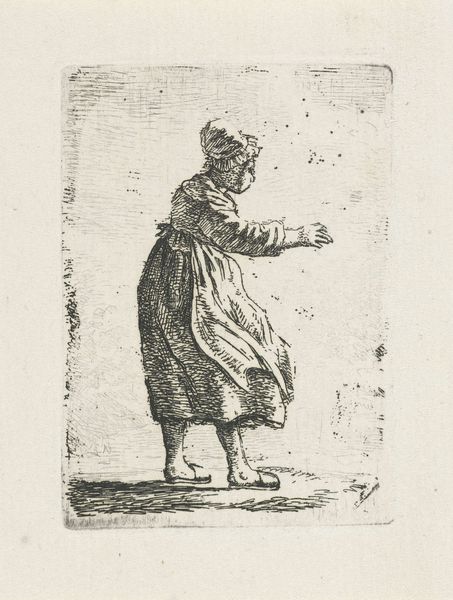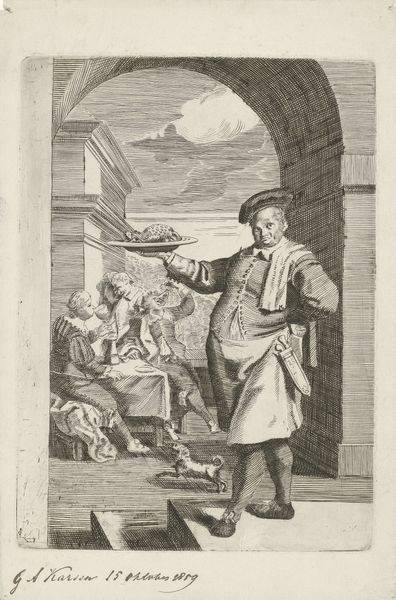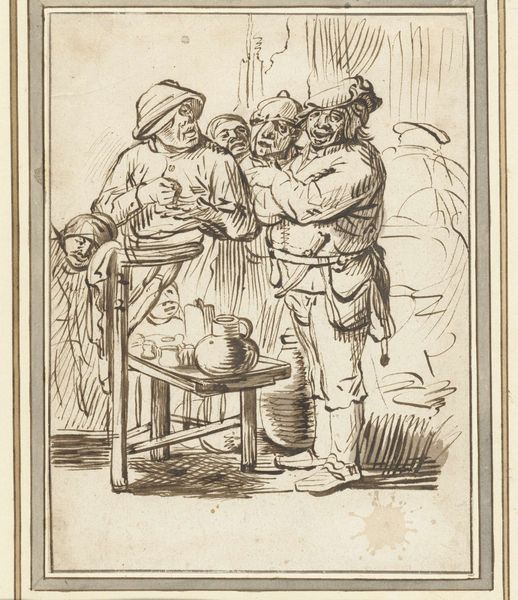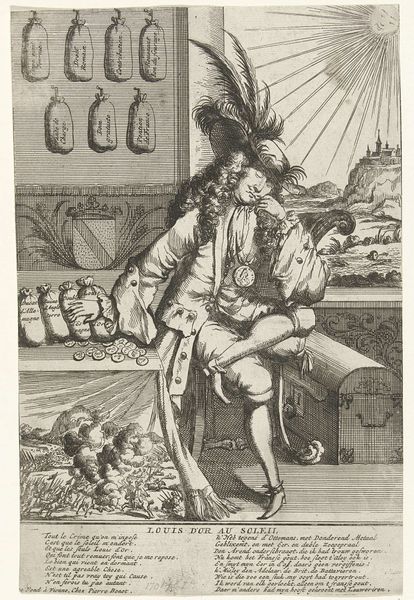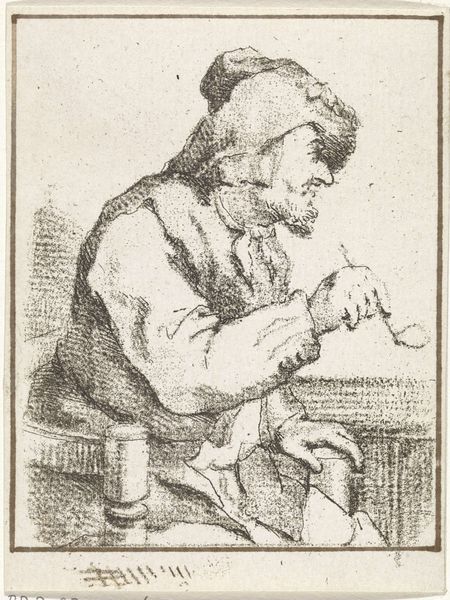
print, engraving
#
portrait
#
dutch-golden-age
# print
#
pen sketch
#
figuration
#
genre-painting
#
engraving
#
realism
Dimensions: height 264 mm, width 190 mm
Copyright: Rijks Museum: Open Domain
This etching, made by Jan Matham in the 17th century, is all about line. Look closely and you'll see that the image is built up from a dense network of etched marks, a painstaking process of dragging a fine needle across a metal plate. The material result is a scene of everyday life, rough and ready. We see a farmer puffing away on a pipe, surrounded by the simple stuff of his existence: jugs, barrels, and even a few cats. The very act of etching, with its demand for meticulous labor, stands in contrast to the farmer’s more relaxed attitude. That's the social tension here: the image immortalizes a life of humble toil, but it does so using a process that's far removed from the farm. Matham's etching elevates the ordinary, but it also reminds us of the distance between the artist and his subject, between the work of art and the work of everyday life. In the end, it asks us to consider the value—and the values—embedded in both.
Comments
No comments
Be the first to comment and join the conversation on the ultimate creative platform.
